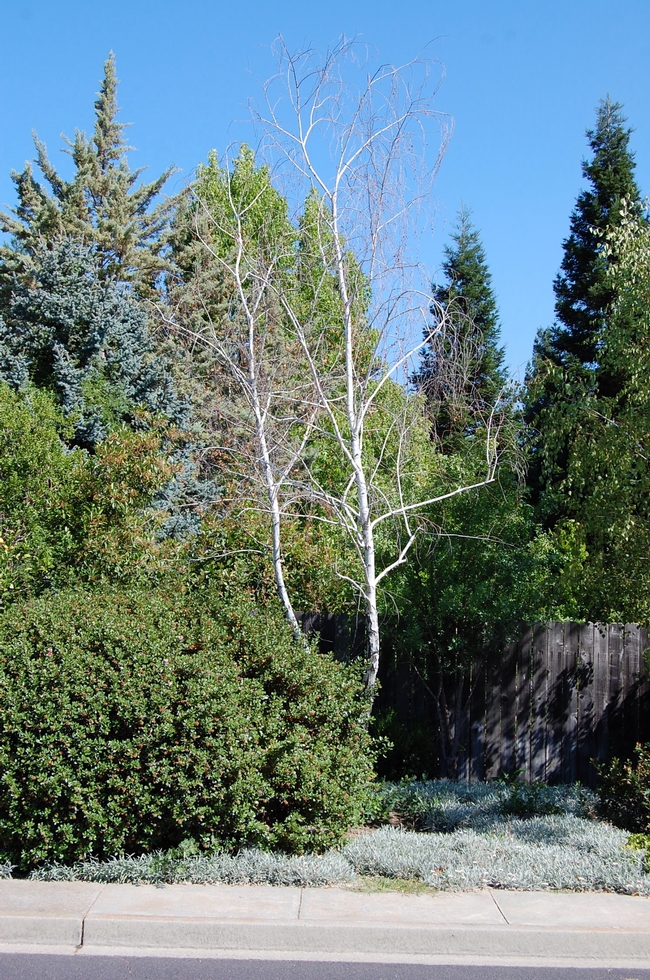Birch Issues
What’s going on with the white birches? Seems as if an awful lot of them are dying. From my front window, I can count three, good-sized DEAD European white birches (Betula pendula). Their leafless, bone-white branches stand in stark contrast to the seemingly healthy hackberries and redwoods and oaks around them.
Alas, this is old news. White birches have been dying off during our hot summers for a long as we have persisted in planting them here. White birches are lovely, and popular in our area. But, they come with a list of issues of which we all should be aware:
- European white birches are native to, well, Europe. Specifically northern Europe, where there are cooler climes and plenty of rainfall to sustain the trees. They grow magnificently there, and to their full potential, much larger than any you’ll see in Solano County.
- When birches get stressed during our Northern California summer droughts, borers move in. The bronze birch borer, Agrilus anxius, is the main culprit. Apparently there is quite a large local population of the borers. Intensive insecticide applications will keep them at bay. Check the University of California Statewide Integrated Pest Management website for more information: http://www.ipm.ucdavis.edu/PMG/GARDEN/PLANTS/birch.html
- Birches are thirsty trees. And the amount of irrigation must grow with the tree. Often, birches — as well as other thirsty trees, such as alders and maples — thrive in well-irrigated lawns areas.
- Even in the best growing situations and climate, birches are not long-lived. You’d be lucky get 30-40 years from a European white birch.

A dead European white birch stands in stark contrast to the healthy landscape around it in this Vacaville yard. (Photo by Kathy Thomas-Rico)

A row of older white birches thrives in a well-irrigated strip of turf along West Monte Vista Avenue in Vacaville. (Photo by Kathy Thomas-Rico)


Posted by Sharon Leos on September 2, 2011 at 9:24 AM